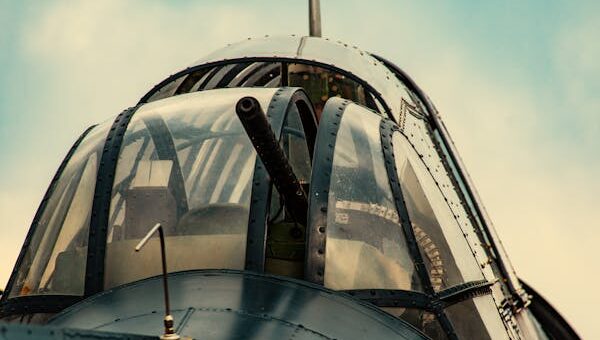
Introduction: Propelling the Future of Air Combat
The evolution of the jet engine in military aviation represents one of the most significant technological advancements in modern warfare. From the crude designs of the 1930s to the ultra-efficient and powerful turbofans of today, the jet engine has revolutionized how military aircraft perform, fight, and dominate the skies. This transformation not only enhanced speed and altitude capabilities but also enabled a new era of aerial tactics and global reach.
Understanding the development of jet engines helps us appreciate the innovation that has driven air forces worldwide. The shift from propeller-driven aircraft to jet propulsion fundamentally altered military strategies, bringing about changes in aircraft design, mission capability, and geopolitical impact.
1. The Birth of Jet Propulsion
1.1 Early Concepts and Pioneers
Jet propulsion ideas date back centuries, but practical development began in the early 20th century. British engineer Frank Whittle and German engineer Hans von Ohain independently developed the first working jet engines in the 1930s.
Key Milestones:
- 1930: Whittle files his patent for a turbojet engine
- 1937: Ohain’s engine powers the Heinkel He 178, the first jet aircraft to fly
- 1941: The British Gloster E.28/39 takes flight, proving Whittle’s concept
Comparison Table:
| Inventor | Country | First Jet Aircraft | Year |
|---|---|---|---|
| Frank Whittle | UK | Gloster E.28/39 | 1941 |
| Hans von Ohain | Germany | Heinkel He 178 | 1939 |
1.2 Jet Engines in World War II
The jet engine’s military application was first tested in combat during World War II. The German Messerschmitt Me 262, the world’s first operational jet fighter, showcased the advantages of jet propulsion—faster speeds and better climb rates.
Advantages of Early Jet Fighters:
- Speeds exceeding 500 mph
- Superior high-altitude performance
- Rapid interception capability
However, early engines were unreliable, with limited service lives and fuel efficiency.
2. The Cold War Era: Innovation and Expansion
2.1 Advancements in Turbojet Design
Post-WWII, countries began investing heavily in turbojet improvements. Early engines were simple single-spool designs but evolved into multi-spool configurations for greater efficiency.
Technological Innovations:
- Improved compressor stages
- Better materials to handle higher temperatures
- Increased thrust-to-weight ratios
These upgrades enabled aircraft such as the F-86 Sabre and MiG-15 to dominate the Korean War skies.
2.2 Supersonic Flight and Afterburners
The Cold War arms race pushed jet engines to support supersonic speeds. The introduction of afterburners—secondary combustion chambers that boost thrust—was a pivotal breakthrough.
Notable Aircraft:
- F-100 Super Sabre: First U.S. supersonic jet
- MiG-21: Compact, high-speed Soviet fighter
- English Electric Lightning: Britain’s Mach 2 interceptor
Afterburner Characteristics:
- Short bursts of extra power
- Significant fuel consumption
- Crucial for takeoff, combat, and supersonic cruise
3. Transition to Turbofan Engines
3.1 Emergence of Bypass Technology
By the 1960s, the limitations of pure turbojets led to the development of turbofans, which added a bypass stream of air around the engine core. This provided a balance between power and fuel efficiency.
Benefits of Turbofan Engines:
- Improved fuel economy
- Quieter operation
- Lower heat signature
Key Aircraft Examples:
- F-111 Aardvark
- F-4 Phantom (late variants)
Turbofans became the dominant engine type for both military and civilian aircraft due to their versatility.
3.2 Low vs. High Bypass in Military Context
Military aircraft typically use low-bypass turbofans to maintain high-speed performance and compact design. High-bypass engines, while more efficient, are primarily reserved for transport and support roles.
Comparison Table:
| Engine Type | Thrust Efficiency | Noise | Application |
| Low-bypass Turbofan | High | Moderate | Fighters, bombers |
| High-bypass Turbofan | Very High | Low | Tankers, transports |
4. Modern Jet Engine Innovations
4.1 Thrust Vectoring and Supermaneuverability
In modern military aviation, jet engines contribute to maneuverability as well as speed. Thrust vectoring allows aircraft to direct engine output for sharper turns and controlled stalls.
Aircraft Using Thrust Vectoring:
- F-22 Raptor
- Su-35 Flanker-E
- Eurofighter Typhoon (limited)
Tactical Advantages:
- Enhanced dogfighting ability
- Evasion of enemy missiles
- High angle-of-attack flight
4.2 Stealth Integration and Infrared Suppression
Newer engines are designed to reduce their infrared (IR) signature, a crucial factor in stealth technology. Techniques include masking hot engine components and blending exhaust flow.
IR Suppression Techniques:
- Special coatings on exhausts
- Serrated nozzles for diffused exhaust
- Engine placement within fuselage for reduced visibility
Stealth aircraft such as the F-35 Lightning II and B-2 Spirit benefit from these designs.
5. Emerging Technologies and the Future
5.1 Adaptive Cycle Engines
One of the most promising advances is the adaptive cycle engine, capable of switching between high-speed and high-efficiency modes.
Key Features:
- Variable bypass ratio
- Adaptive cooling
- Intelligent power management
Program Example: The U.S. Air Force’s Next Generation Adaptive Propulsion (NGAP) program is developing these engines for sixth-generation fighters.
5.2 Alternative Fuels and Sustainable Power
With a growing focus on sustainability, militaries are exploring biofuels and synthetic fuels to reduce dependence on traditional jet fuel.
Alternative Fuels Explored:
- Algae-based biofuel
- Fischer-Tropsch synthetic fuel
- Hydrogen-powered concepts
While still in testing, these fuels could reduce carbon emissions and extend operational range.
Conclusion: A Legacy of Speed and Power
The evolution of the jet engine in military aviation is a story of relentless innovation, international rivalry, and engineering genius. From the smoky trails of early turbojets to the adaptive engines of tomorrow, jet propulsion continues to define the limits of air combat capability.
Summary Points:
- Jet engines revolutionized military flight during WWII
- Innovations have improved speed, fuel efficiency, and maneuverability
- Future engines promise even greater adaptability and sustainability